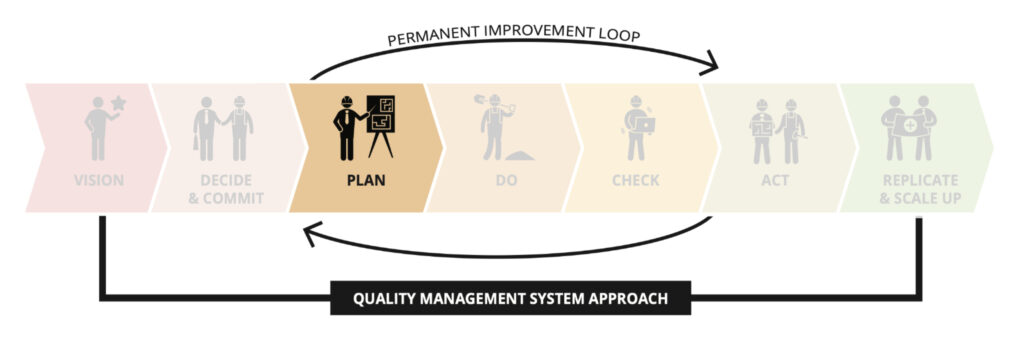NEB ambition
The ultimate ambition of the New European Bauhaus is to achieve transformation. To do this, the NEB Compass has identified specific levels of ambition that outline the desired outcomes for each of the NEB values.
The ultimate ambition of the New European Bauhaus is to achieve transformation. To do this, the NEB Compass has identified specific levels of ambition that outline the desired outcomes for each of the NEB values.
These areas refer to the five key domains of intervention that CrAFt's New European Bauhaus Impact Model considers essential for guiding and evaluating complex urban initiatives.
The participation level refers to the degree or extent to which individuals or groups are actively involved or engaged in a particular activity, project, or process. It assesses the depth of their involvement, contributions, and commitment, ranging from minimal or passive participation to active and dedicated participation.
The New European Bauhaus (NEB) aims to promote the values of sustainability, aesthetics, and inclusion in the design and transformation of urban spaces. It emphasises the integration of environmental, social, and economic considerations to create harmonious and innovative living environments.
According to the Smart City Guidance Package, there are seven stages to plan and implement smart city projects. These stages propose a logical and coherent roadmap for city initiatives involving many stakeholders.
CrAFt Session 4: “Define your action plan” revolved around the PLAN stage. The general pathways and policies for climate neutrality are detailed in this phase. Approaches, technologies and financial models are chosen in collaboration with key stakeholders that want to make the city’s future actionable.

Kirsti Slotsvik (Sørsida Utvikling AS, Norway) presented the urban transformation of the South Side of Ålesund, Norway, from a traditional harbour into an 80,000 sqm area that combines residential houses, office spaces and a culturally-rich environment.
Kirsti provided some practical information about what has made the project successful. For instance:
The second case was presented by Noemí Julián (Fondazione Innovazione Urbana – FIU, Bologna). Noemí introduced FIU, a multidisciplinary organisation working to build the city of the future, and shared with us the Emergency Pedestrianism Plan that the City of Bologna approved in response to the increasing need for public space that emerged with the pandemic. As part of the process, citizens —including kids— were invited to co-design and co-produce the first school squares of the city.
FIU’s model uses four groups of tools to interact with citizens: the megaphone, the antenna, the area and the factory.
Later on, in the breakout groups, we discussed the 11 to-dos included in the PLAN stage. Several participants pointed out that these to-dos can happen simultaneously or in a different order, as the process is very fluid. The participants also mentioned that the co-creation process is new for the cities, and they have needed time to learn and adapt. In this sense, participants also indicated that involving citizens in short-duration projects is easier, but it becomes challenging when the projects last for several years.
A good approach for cities to reach an agreement with stakeholders is the Climate Contracts —even for cities not part of the Cities Mission—. Still, these often lack practicality and are not actionable.
The discussion moved on to the topic of funding. The participants briefly discussed the value of creating an investment plan as part of the project process and how the community of local experts can be conducive to creating an efficient funding model. For most of the cities, the most accessible funds come from the European Union. Private financing is an excellent source in some countries, but in others, it takes a lot of work to engage companies in this endeavour.
Finally, the conversion derived into how the principles of the New European Bauhaus could be integrated into the PLAN stage. It was suggested that the three principles should be addressed simultaneously to maintain social and distributive justice in our cities and that it’s crucial to explain the principles to city stakeholders as part of the PLAN stage.